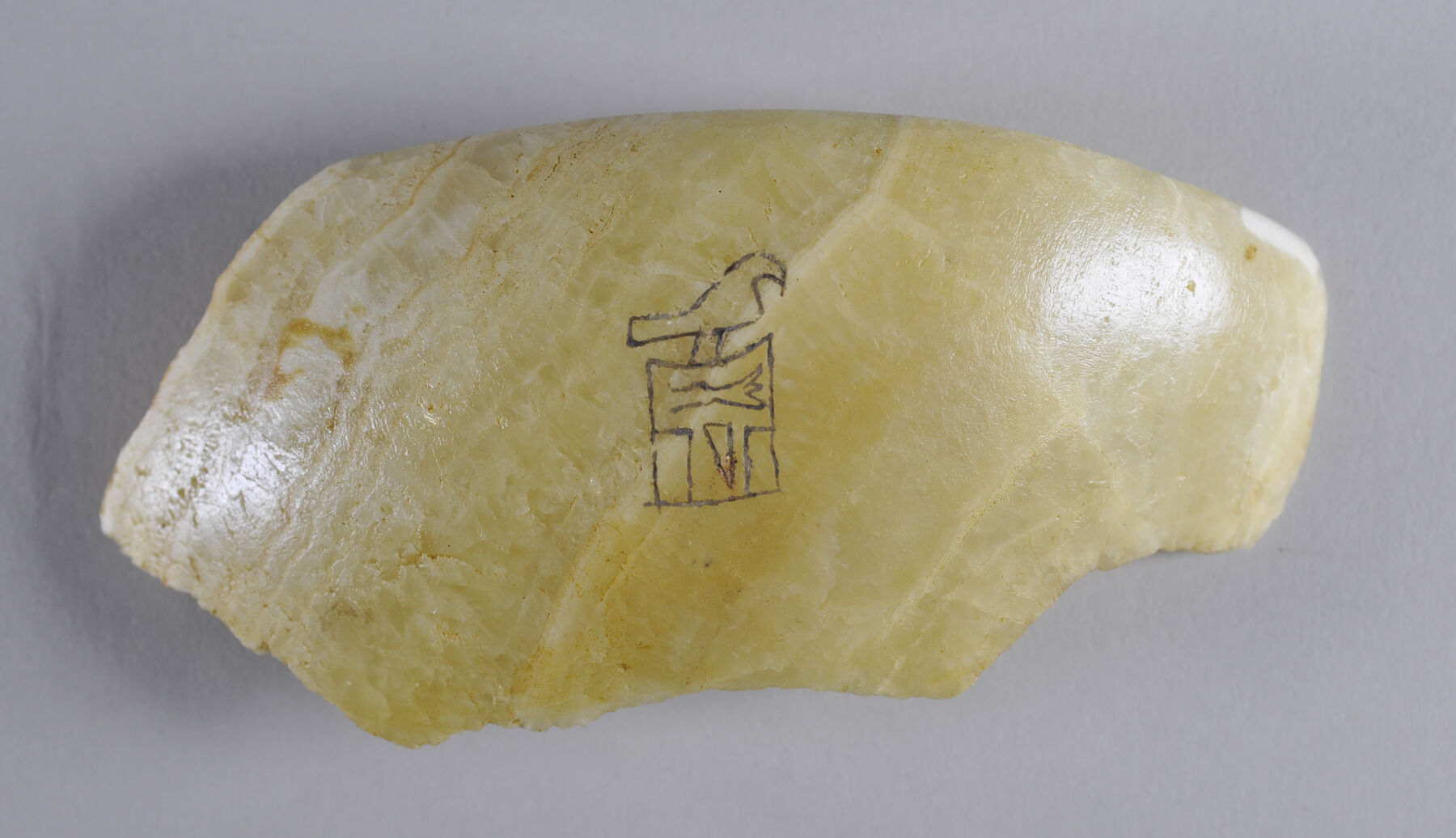Many Egyptologists believe that Narmer was the first king of Dynasty 1. The famous Narmer Palette in the Egyptian Museum in Cairo belongs to this king.1 Narmer is often equated with King Menes, who united Upper and Lower Egypt for the first time, establishing the ancient Egyptian dynastic state.
This bowl fragment comes from the private collection of the Egyptologist Peter Kaplony (1933–2011), who specialized in Predynastic and Early Dynastic history and language. Kaplony acquired the fragment in the 1960s and published it in 1966.2 The inscribed bowl fragment is one of only four known to exist.
On the bowl is etched a serekh, which represents the royal palace in plan and elevation with a recessed façade. At the top of the serekh, Narmer’s Horus name is written in hieroglyphs with the nr (catfish) and mr (chisel). A falcon perches on top of the serekh to illustrate that the king, in the incarnation of Horus, is in the palace. This inscribed fragmentary bowl represents the very beginning of Egyptian kingship and, as such, is an incredibly rare piece of history.
MH
Bibliography
- Kaplony 1966
- Kaplony, Peter. 1966. Kleine Beiträge zu den Inschriften der ägyptischen Frühzeit. Ägyptologische Abhandlungen 15. Wiesbaden: Otto Harrassowitz.
